20+ Sample Research Information Sheet
-
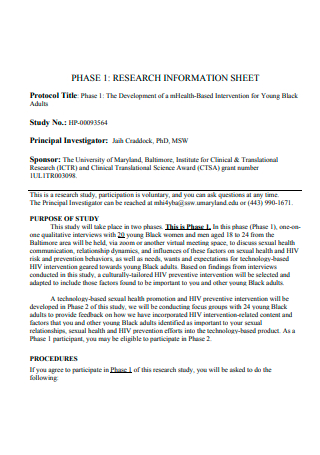
Research Information Sheet Template
download now -
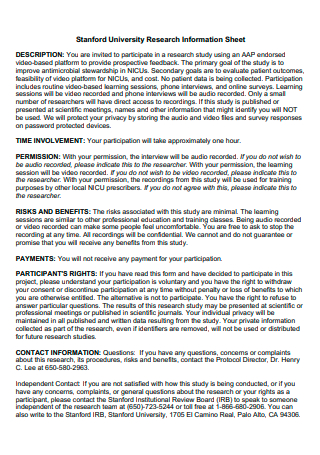
University Research Information Sheet
download now -
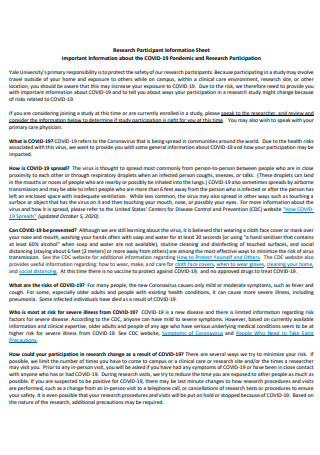
Simple Research Participant Information Sheet
download now -
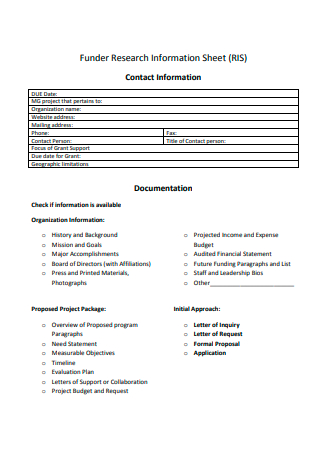
Funder Research Information Sheet
download now -
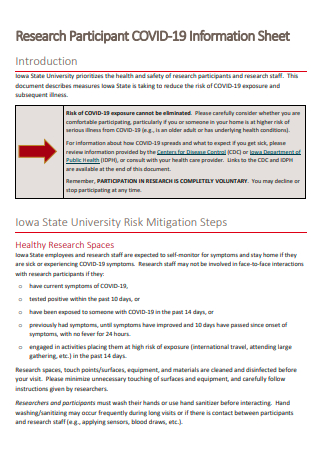
Research Participant COVID-19 Information Sheet
download now -

Research Information Sheet in PDF
download now -
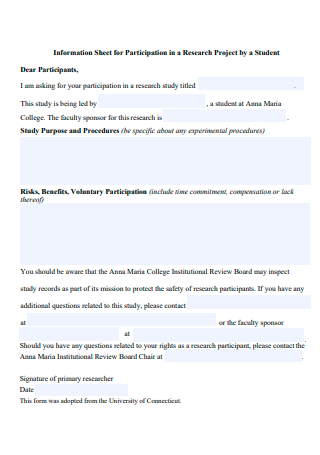
Research Project by Student Information Sheet
download now -
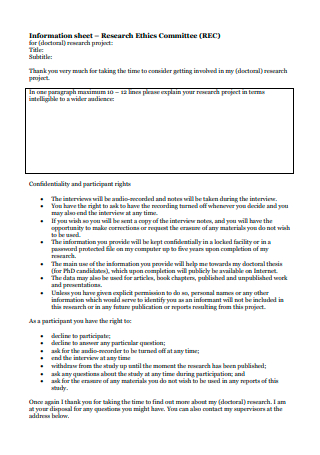
Research Ethics Committee Information Sheet
download now -
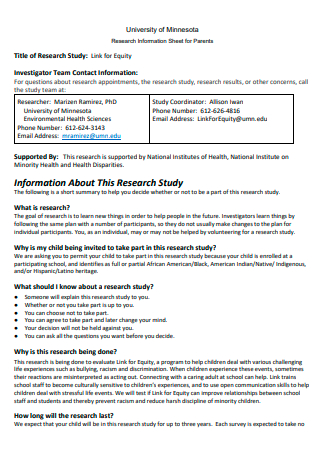
Research Information Sheet For Parents
download now -
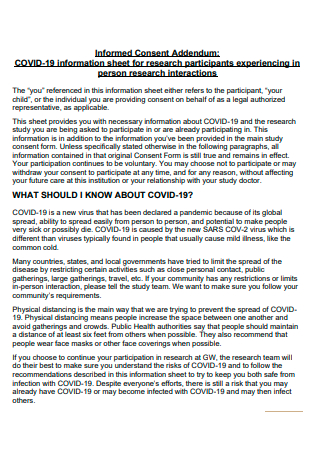
Research Participants Covid-19 Information Sheet
download now -
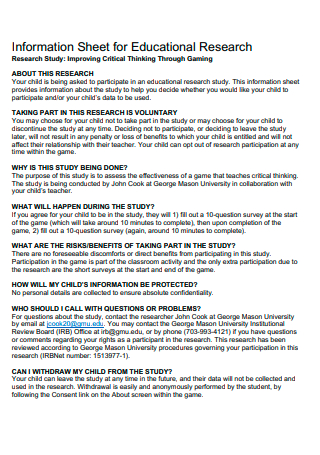
Educational Research Information Sheet
download now -
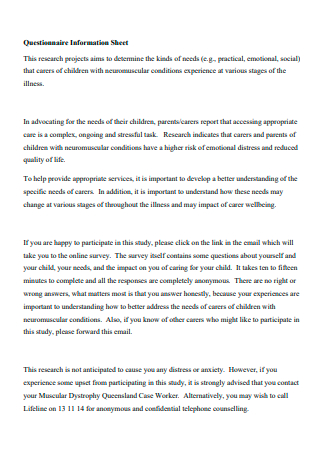
Research Questionnaire Information Sheet
download now -
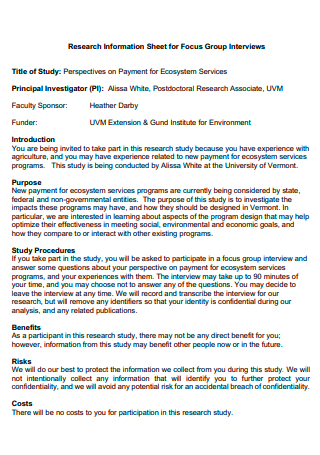
Research Information Sheet For Focus Group Interviews
download now -
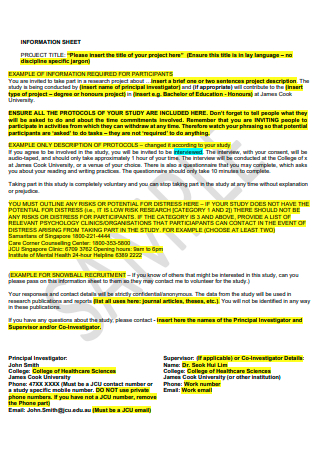
Sample Research Information Sheet
download now -
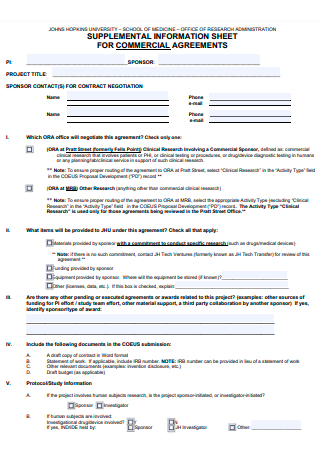
Research Administration Suppemental Information Sheet
download now -
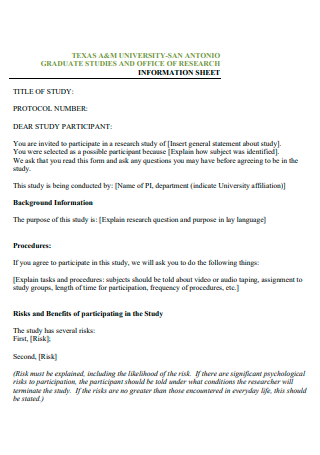
Basic Research Information Sheet
download now -
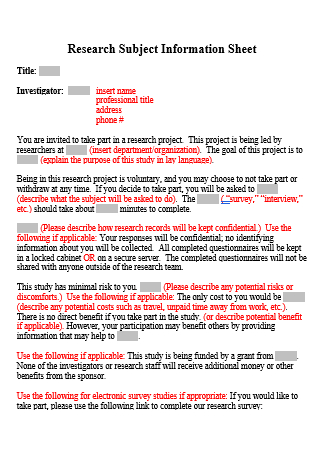
Research Subject Information Sheet
download now -
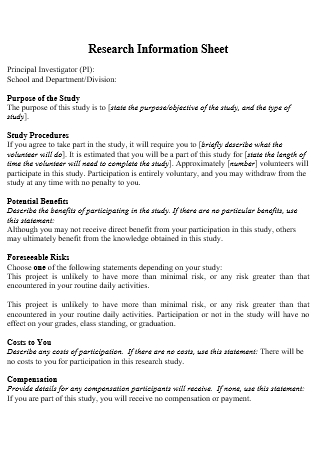
Research Information Sheet Example
download now -
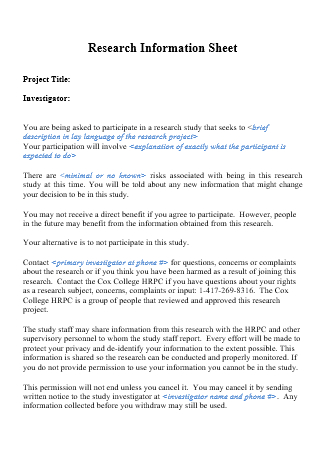
Research Information Sheet in DOC
download now -
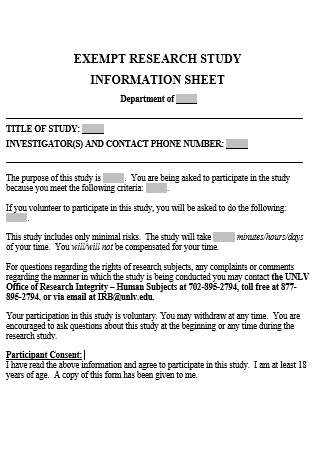
Exempt Research Information Sheet
download now -

Printable Research Information Sheet
download now
FREE Research Information Sheet s to Download
20+ Sample Research Information Sheet
What Is a Research Information Sheet?
Why Are Research Information Sheets Important?
The Components of a Standard Research Information Sheet
How to Create a Proper Research Information Sheet
FAQs
How long should a research information sheet for participants be?
How will participant information be kept confidential?
What are the other names of an information sheet?
What Is a Research Information Sheet?
A research information sheet serves as a research fact sheet or brief summary of a research project. That means you talk about the research’s goals, processes, resources, and data in general. However, research information sheets are written in an easy-to-read structure and language wherein non-experts can understand the study. That way, it is easy to introduce the research to the public, particularly in presenting the research information to potential participants expected to take part in the research.
Accel Research Sites reported that informed consent is crucial in clinical trials so participants fully understand what they signed up for.
Why Are Research Information Sheets Important?
Why is there a need to write a research information sheet, you might ask? Rest assured, the information stated in these sheets matters for varying purposes. And here are some reasons that prove just how important research information sheets are:
Contains an Easy-to-Read Research Summary
A research information sheet is written carefully from introducing the research project down to explaining the entire research in layman’s terms. With that said, the sheet is a reliable reference page in case anyone wishes to familiarize what the research involves. Also, anyone who forgets what the research is about can simply refer to the sheet anytime as it can be read whenever you want. So rather than taking too much time understanding research data, research information sheets help you understand quickly and easily.
Leads to Informed Consent
As most research information sheets are made for potential participants meant to participate in the study, the sheet eventually leads to a consent form. The purpose of the research is not to force people to join anyway since it is voluntary. A research information sheet can talk about what participant information is considered confidential or not, what participation in practice means, how long participants take part in the research, etc. And once participants are well-informed about the research, they can make an informed decision whether to participate or not in the end.
Answers the Critical Questions
Much like a detailed letter, research information sheets answer the crucial questions about the research. The who, what, when, where, why, and how of research will surely be tackled in the sheet. And that means any research paper that does not answer the important research questions needs some editing. So as someone who is supposed to be knowledgeable about the research, start identifying what data are needed to share for the audience.
Works for All Types of Research
Whether you are working on quantitative or qualitative research, research information sheets are useful for all research types. Despite what kind of research you are going for, it will always have crucial details to understand the research. And a pro tip is to take down notes the whole time you decide on a research project as your notes will be helpful as the basis on what to add to the research information sheet later on.
The Components of a Standard Research Information Sheet
The data incorporated in a research information sheet matters per research project. But generally, basic research information sheets contain the following significant components:
How to Create a Proper Research Information Sheet
Research information sheets contain the crucial data of your research project so it only makes sense to create it carefully and effectively. And using these five steps, you are sure to perfect your research information sheet:
-
Step 1: Study Your Research Project Thoroughly
Your research information sheet would not be a reliable fact file if you yourself are not knowledgeable enough about the research project. Review the official research paper or research proposal first to have a proper idea about the study. Conducting a full research analysis will help you refresh your memory for sure. Also, discuss with the other research project team members and stakeholders since it can be a collaborative effort as well. That way, you will be sure of what specific details to add or not to add to the research information sheet you make later.
-
Step 2: Download a Research Information Sheet Sample
Your experience in making the sheet will certainly be easy with a research information sheet example you can edit anytime. Blank printable samples await you, as seen on the 20+ research information sheet templates above this article. Besides research information sheets, more sample templates are up for grabs as well such as a participant information sheet and consent form, research survey questionnaire, thesis research proposal, and many more.
-
Step 3: Get to Know Your Audience
To whom is the research information sheet? Conduct an audience analysis to be sure of who you are writing for. It could be that your audience involves college students, business owners, hospital patients, or the general public. And you have to make sure that what you write will be understandable for the audience. So don’t assume that your audiences are all experts about the research, which is why the research information sheet should discuss the study in layman’s terms.
-
Step 4: Complete the Research Information Sheet’s Components
From the research project title, invitation paragraph, project purpose, down to the research organizers and contact details, be sure you have every standard component covered in your research information sheet. These elements make up a complete research information sheet anyway. And if there are other elements or clauses you would like to add to the sheet such as a research expense sheet or a research agreement form, you may do so. Just make sure these components are important and relevant to the research or they don’t have to be there at all.
-
Step 5: Simplify and Emphasize the Important Details
A research information sheet can be as short as a one-page fact sheet if you know how to keep your message brief yet straightforward. So there is no need to complete your message. Ensure that your document follows an easy-to-follow structure. The key is to reread what you wrote and if there is anything that can be simplified, do it. Also, check for possible mistakes because presenting research information sheets with errors already makes your research bogus. Thus, only submit the sheet when you are confident that it answers the necessary questions about your research.
FAQs
How long should a research information sheet for participants be?
A one-page document would suffice for participant research information sheets if it answers the crucial questions about the research. But generally, these sheets may cover around two to four pages long. But, make sure it doesn’t reach more than eight pages. It is not a full research report yet.
How will participant information be kept confidential?
Researchers can apply numerous ways on how to keep their research subjects’ identity confidential. An example is to store their data on password-protected software or simply kept on their locked storage of confidential files. The confidentiality agreement will likely be tackled in the research information sheet though.
What are the other names of an information sheet?
An information sheet can be referred to as a fact sheet, fact file, information leaflet, or information document.
You should know by now that a research information sheet marks the face of your research project. Rather than giving hard-to-read or long technical explanations about the study, just present the sheet for easy viewing and a quick understanding to boot. The data in the sheet will give a clear visual to audiences as to what the study involves from start to finish. Thankfully, you never have to create the sheet from scratch. Simply optimize sample research information sheet templates. Download now!
